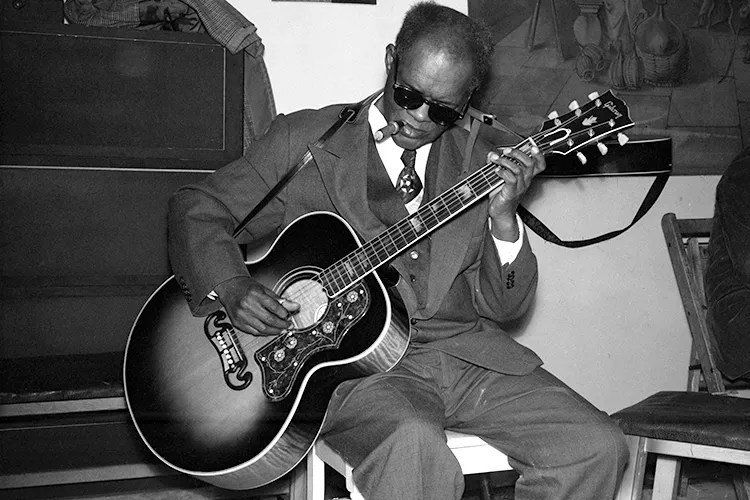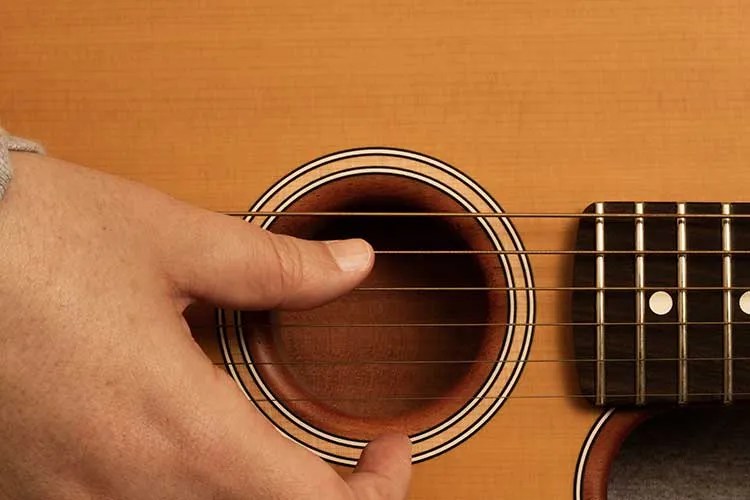‘New Beginnings’: A Contemplative Study by Yasmin Williams
Yasmin Williams has made a name for herself with her extended techniques, often playing the guitar flat on her lap, articulating the strings with two-handed tapping, occasionally augmented with a kalimba (thumb piano). But on “New Beginnings,” from her recent album, Unwind, Williams uses a more conventional fingerstyle technique. “I wanted this piece to have a simple melody and accompaniment, so I used simpler techniques. I only use extended techniques if the composition calls for it.”
It also happens that Williams wrote the piece five or six years ago, when she was in high school in Northern Virginia and had yet to fully develop her inventive approach to the guitar. She says, “At that point, I was starting to think about college and how my life would change, hence the title, ‘New Beginnings.’ I was a bit intimidated by the prospect of moving away from home for college [at NYU in New York], but also excited, which is why the piece has a rather hopeful yet subdued tone.”
Williams says that the compositional process for “New Beginnings” was fairly simple. Tuning her guitar to open D, and placing a capo at the fourth fret, she sat down, started playing, and immediately happened upon the main theme (bars 1–2 of the notation here). “The other sections of the piece pretty much wrote themselves,” Williams says. “I believe this particular composition took me about a week to finish, which is a lot shorter than the usual amount of time I spend composing songs.”
ADVERTISEMENT
To play “New Beginnings,” first get into open-D tuning—tune strings 1 and 6 down a whole step, to D from E; string 2 down a step, to A from B; and string 3 down a half step, to F# from G. The open strings will form a D chord, which will sound as F#/Gb due to the fourth-fret capo. Remember to retune as needed after clamping it on.
If open-D tuning is new to you, then the chord shapes will obviously be unfamiliar, so your first order of business is to get these grips under your fingers. (For a full lesson on fingerpicking in open-D tuning, see the Weekly Workout in the June 2015 issue of AG.) Fingerings are often a matter of personal preference, so mark up the notation with those that work best for you. For example, you might play the first chord, Em, with your second finger on string 6, fret 2; third finger on string 4, fret 2; and first finger on string 3, fret 1. Also, be sure to hold down each chord grip for as long as possible throughout, for a ringing effect.
When learning a new piece, it might be tempting to plow right through from beginning to end, but this can be counterproductive. Instead, it’s best to tackle “New Beginnings”—or really any composition for that matter—section by section, ideally with a metronome. Williams says, “Several sections repeat, which makes tackling the sections first, then connecting them, a much easier way to learn the piece.”
ADVERTISEMENT
This article originally appeared in the May/June 2019 issue of Acoustic Guitar magazine.
Many of the teachers who contribute lessons to Acoustic Guitar also offer private or group instruction, in-person or virtually. Check out our Acoustic Guitar Teacher Directory to learn more!








